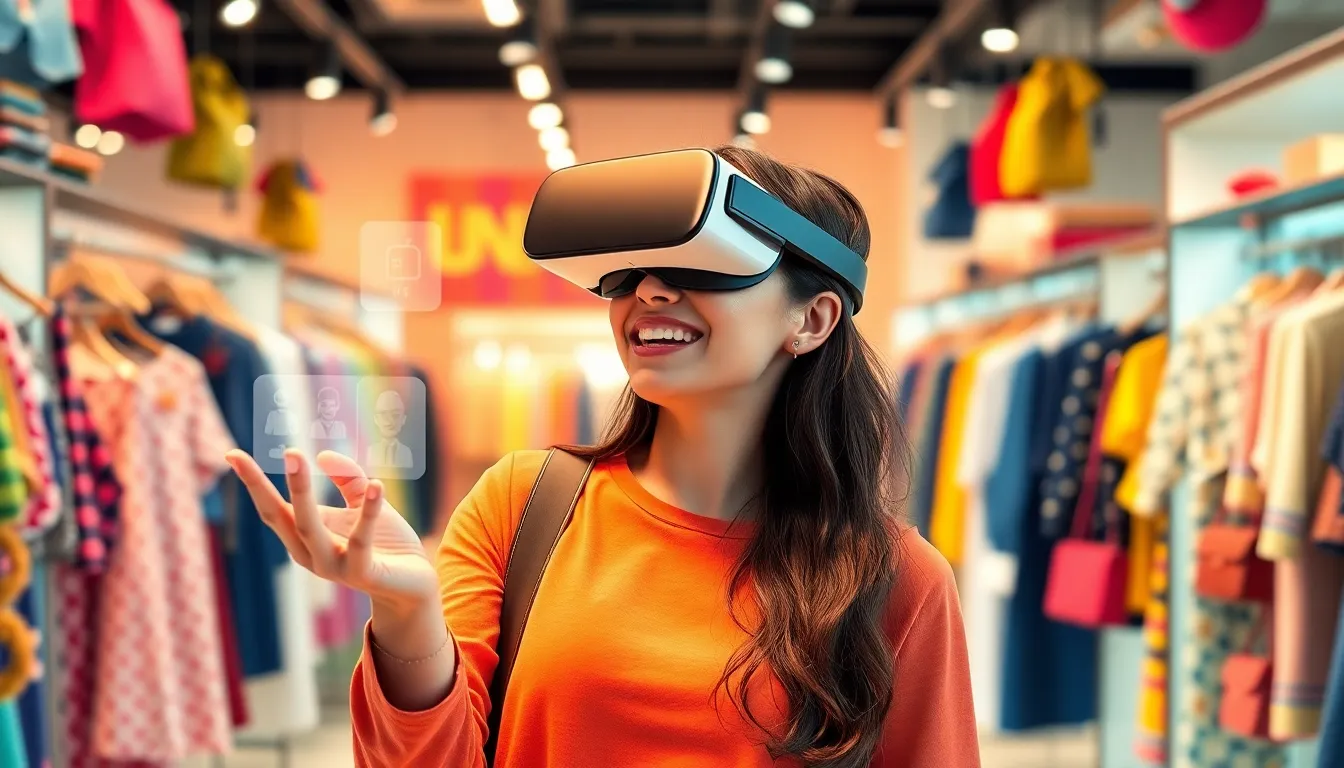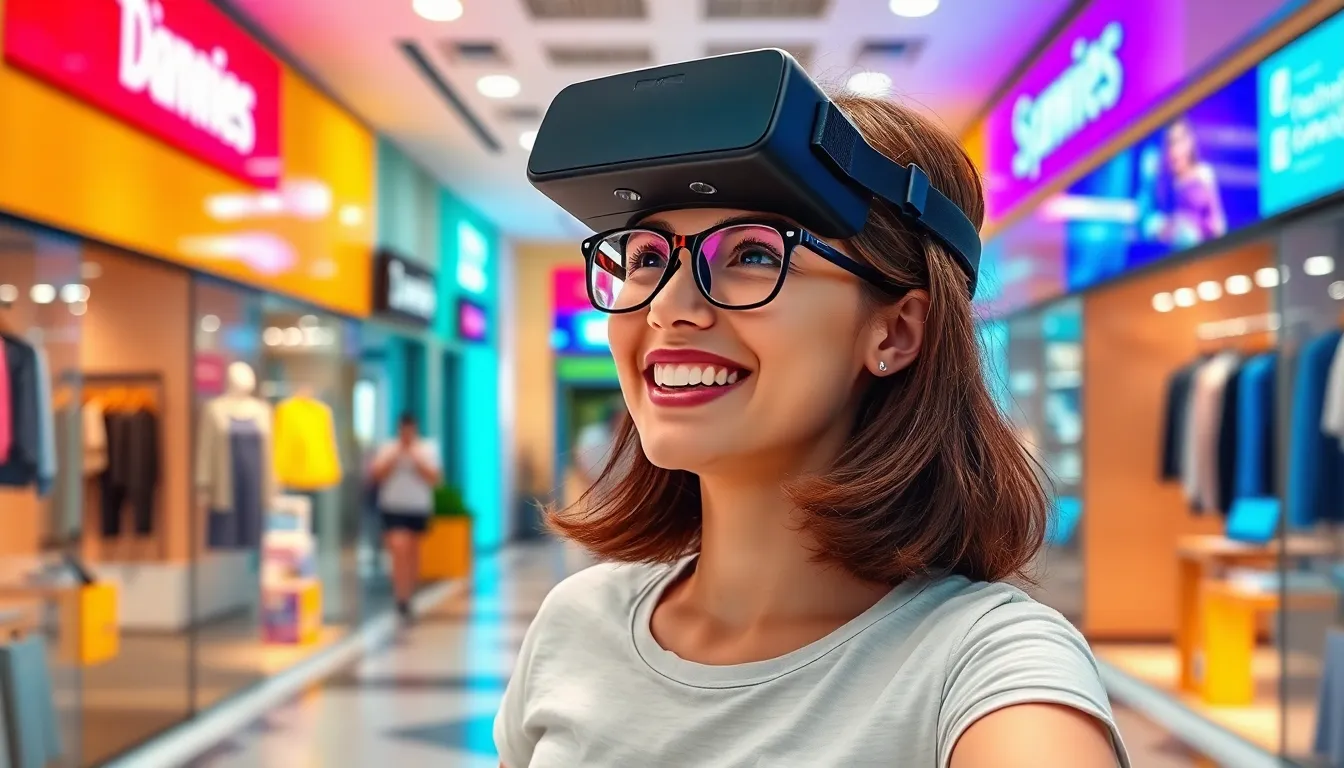Imagine stepping into a virtual mall without the hassle of parking or dodging crowds. Welcome to the world of VR shopping, where the only thing missing is the smell of popcorn from the food court! With just a headset, shoppers can explore endless aisles, try on outfits, and even chat with virtual sales associates—all from the comfort of their couch.
Table of Contents
ToggleWhat Is VR Shopping?
VR shopping offers an innovative way for consumers to engage with products. This immersive technology enables users to explore a virtual environment designed as a mall or storefront. Shoppers can browse through various products, interacting with the items in a way that mimics real-life experiences.
Wearing a VR headset, users experience a three-dimensional space. They can examine clothing, furniture, or electronics from different angles, offering a level of detail not available in traditional online shopping. Unlike conventional e-commerce, shoppers feel presence and agency within the virtual space.
Virtual sales associates enhance the experience by providing guidance and answering questions. These AI-driven avatars can suggest products based on user preferences, adding a personalized touch. Additionally, customers can try on clothing virtually, which reduces the hassle of returns associated with incorrect sizes.
Virtual reality shopping also increases accessibility. Consumers who face mobility challenges or live in remote areas can access stores without physical limitations. They enjoy the same level of selection as those who visit physical brick-and-mortar stores.
The absence of sensory elements, such as food court aromas, does present a limitation. However, advancements in sensory technology may address this in the future. As more retailers adopt VR shopping, consumers can expect a continually evolving shopping experience that leverages technology for convenience and engagement.
Benefits of VR Shopping

VR shopping offers distinct advantages that improve both efficiency and satisfaction. Shoppers experience a seamless blend of convenience and engagement unique to this medium.
Enhanced User Experience
Enhanced user experience remains a core benefit of VR shopping. Each shopper navigates a 3D environment, allowing them to view products from multiple perspectives. Shoppers can interact with items directly, creating a realistic experience that traditional online shopping lacks. In addition, virtual fitting rooms allow consumers to try on clothing, eliminating uncertainties about fit and comfort. Personalized interactions with virtual sales associates further enhance satisfaction, providing tailored recommendations based on individual preferences.
Increased Engagement
Increased engagement characterizes the VR shopping experience. Immersive environments invite customers to explore product features, capturing attention in ways standard websites can’t. Interaction levels surpass typical online shopping, making browsing feel more like an adventure. Customized experiences draw shoppers deeper into the virtual world, keeping them involved longer. Retailers benefit from this increased attention, leading to better conversion rates as engaged shoppers often make purchases.
Challenges of VR Shopping
VR shopping faces several challenges that could hinder its growth and consumer acceptance.
Technical Limitations
Technical issues present significant obstacles in VR shopping. Hardware compatibility varies, and not all consumers own the necessary equipment, making accessibility an issue. Latency problems can disrupt the shopping experience, leading to frustration. Additionally, current VR platforms may lack seamless integration with existing e-commerce systems. Users often encounter software bugs that affect performance and usability. Operating platforms must also provide adequate processing power to deliver an immersive experience without lag. The development of standardized protocols could help manufacturers create compatible experiences, addressing technical barriers effectively.
Consumer Adoption
Consumer adoption remains a critical challenge in the expansion of VR shopping. A limited understanding of VR technology may deter potential users from exploring virtual shopping experiences. Perceptions about costs associated with VR headsets also play a role, as some consider them expensive investments. Many consumers prefer familiar online shopping methods, creating resistance to trying new technologies. Moreover, concerns about privacy and data security in virtual environments can further complicate acceptance. Educating users about the benefits of VR shopping may help alleviate these apprehensions and boost adoption rates over time.
Future Trends in VR Shopping
Anticipation surrounds the future of VR shopping as technological advancements reshape its landscape. Emerging trends indicate a significant evolution in how consumers interact with products.
Integration with AI
Enhanced integration with AI will revolutionize the VR shopping experience. Personalization is poised to reach new heights through advanced algorithms that analyze user preferences and behaviors. Virtual sales associates, powered by AI, will provide tailored recommendations based on individual shopping habits. This seamless interaction creates a more intuitive environment for shoppers. Additionally, AI-driven analytics can offer retailers insights into consumer trends, enabling them to adjust their strategies effectively. The result is a more engaging shopping experience that caters directly to users’ needs.
Virtual Showrooms
Virtual showrooms are set to become a focal point in the VR shopping realm. These immersive environments allow brands to showcase their products in a lifelike context. Shoppers can explore items as if they were present in a physical location, facilitating better decision-making. Lighting, space, and product arrangement can enhance the perception of quality and fit. Furthermore, brands can create unique, branded experiences that capture consumer attention and drive sales. Such environments not only highlight products but also foster emotional connections between consumers and brands.
VR shopping represents a groundbreaking shift in how consumers interact with products. By merging convenience with immersive experiences it creates an engaging platform that traditional shopping methods struggle to match. As technology continues to evolve the potential for personalized interactions and realistic simulations will only enhance this innovative shopping approach.
While challenges like technical limitations and consumer adoption persist the future looks promising. With ongoing advancements and increased awareness about VR technology more shoppers are likely to embrace this unique way of purchasing. Ultimately VR shopping is set to redefine retail experiences making them more accessible and enjoyable for everyone.



